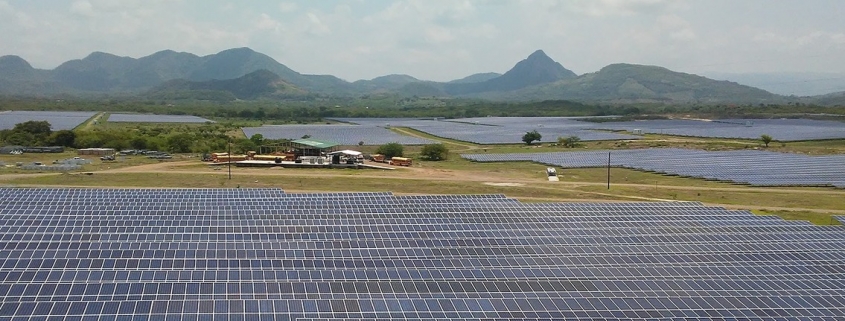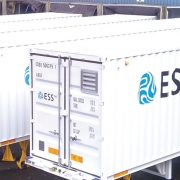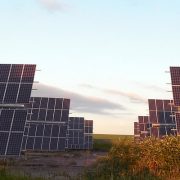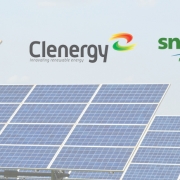Levelized unsubsidized cost of utility-scale solar is now as low as $36/MWh, Lazard report finds
Financial advisory and asset management firm Lazard Ltd announced on November 8 the release of its annual in-depth studies comparing the costs of energy from various generation technologies and of energy storage technologies for different applications. Lazard’s latest annual Levelized Cost of Energy Analysis (LCOE 12.0) shows a continued decline in the cost of generating electricity from alternative energy technologies, especially utility-scale solar and wind.
In some scenarios, alternative energy costs have decreased to the point that they are now at or below the marginal cost of conventional generation.
Lazard also released the annual Levelized Cost of Storage Analysis (LCOS 4.0) which also shows significant cost declines across most use cases and technologies, especially for shorter duration applications.
George Bilicic, Vice Chairman and Global Head of Lazard’s Power, Energy & Infrastructure Group said:
“Although diversified energy resources are still required for a modern grid, we have reached an inflection point where, in some cases, it is more cost effective to build and operate new alternative energy projects than to maintain existing conventional generation plants. As alternative energy costs continue to decline, storage remains the key to solving the problem of intermittency and we are beginning to see a clearer path forward for economic viability in storage technologies.”
KEY FINDINGS
The two studies offer a variety of insights, including the following selected highlights:
Levelized Cost of Energy Analysis (LCOE 12.0)
- While alternative energy is increasingly cost-competitive and storage technology holds great promise, alternative energy systems alone will not be capable of meeting the baseload generation needs of a developed economy for the foreseeable future. Therefore, the optimal solution for many regions of the world is to use complementary conventional and alternative energy resources in a diversified generation fleet.
- The cost of generating energy from utility-scale solar photovoltaic (PV) and onshore wind technologies continue to decline. The mean levelized cost of energy of utility-scale PV technologies is down approximately 13% from last year and the mean levelized cost of energy of onshore wind has declined almost 7%.
- The levelized cost of energy of gas technologies saw a modest decline year-over-year. The mean levelized cost of energy of gas peaking fell 2% and the mean levelized cost of energy of combined cycle gas has declined 4%.
- The low end levelized cost of onshore wind-generated energy is $29/MWh, compared to an average illustrative marginal cost of $36/MWh for coal. The levelized cost of utility-scale solar is nearly identical to the illustrative marginal cost of coal, at $36/MWh. This comparison is accentuated when subsidizing onshore wind and solar, which results in levelized costs of energy of $14/MWh and $32/MWh, respectively.
Levelized Cost of Storage Analysis (LCOS 4.0)
Lazard’s latest annual Levelized Cost of Storage Analysis (LCOS 4.0) shows significant cost declines across most use cases and technologies, especially for shorter duration applications.
- Lithium-ion remains the least expensive of the storage technologies and continues to decrease in cost due to improved efficiencies and a maturing supply chain. However, some of those gains may be mitigated by rising cost pressures from higher commodity pricing (e.g., cobalt and lithium carbonate) and tightening supply.
- Project economics for a variety of illustrative energy storage applications have modestly improved year-over-year, reflecting improved costs rather than rising revenues, which remain dependent on local market dynamics or utility tariffs. Ancillary service products (e.g., frequency regulation), demand response and demand charge mitigation represent potentially attractive revenue opportunities.
- Combining energy storage with solar PV can create value by sharing infrastructure (e.g., inverters, interconnection), reducing curtailed production, capturing “clipped” solar production and/or through charging cost savings. Currently, the economics for solar PV + storage systems are most attractive for commercial use cases, but remain modest for residential and utility-scale projects.
- Industry participants expect costs to continue to decline over the next five years, driven by economies-of-scale, improved standardization, technological improvements and increased renewables penetration. Technology-specific cost decline projections vary widely, but are expected to be as much as 28% for lithium-ion technologies over the next five years.
LCOE 12.0 and LCOS 4.0 reflect Lazard’s approach to long-term thought leadership, commitment to the sectors in which we participate and focus on intellectual differentiation. The two studies are posted at www.lazard.com/perspective.
Lazard’s Global Power, Energy & Infrastructure Group serves private and public sector clients with advisory services regarding M&A, financingand other strategic matters. The group is active in all areas of the traditional and alternative energy industries, including regulated utilities, independent power producers, alternative energy and infrastructure.
Source: Press Release by Lazard Ltd. Photo Credit: © Lazard Ltd. Photo Credit: CC0 – Creative Commons.














